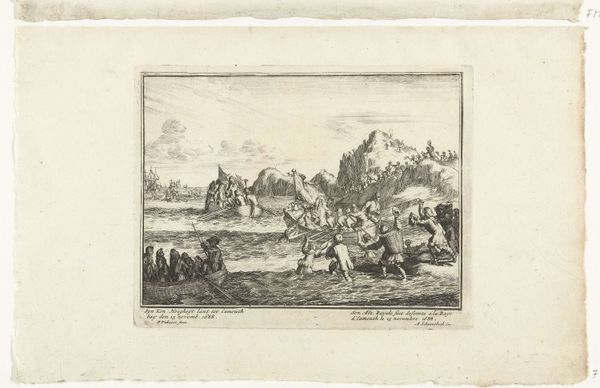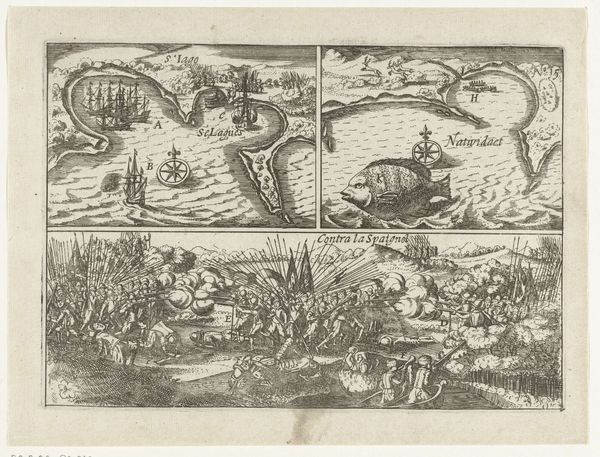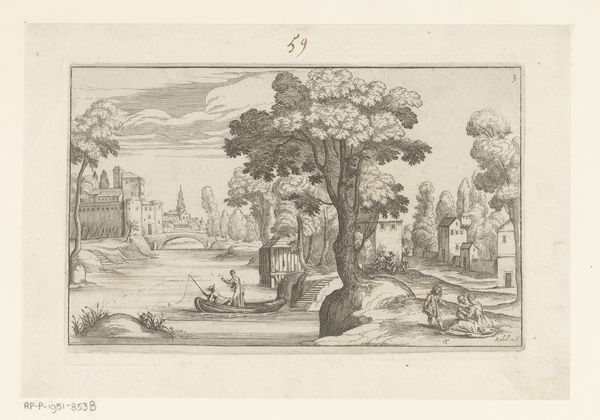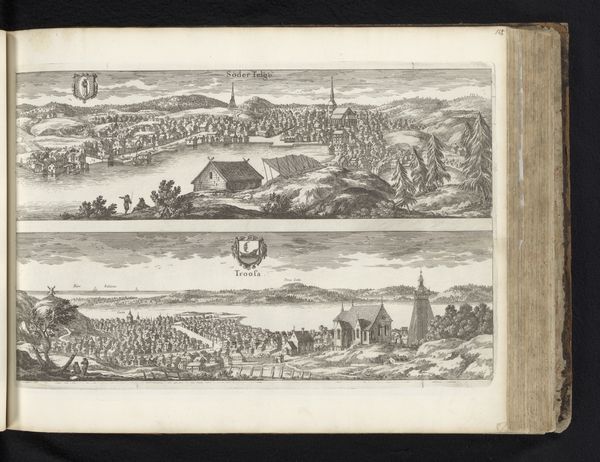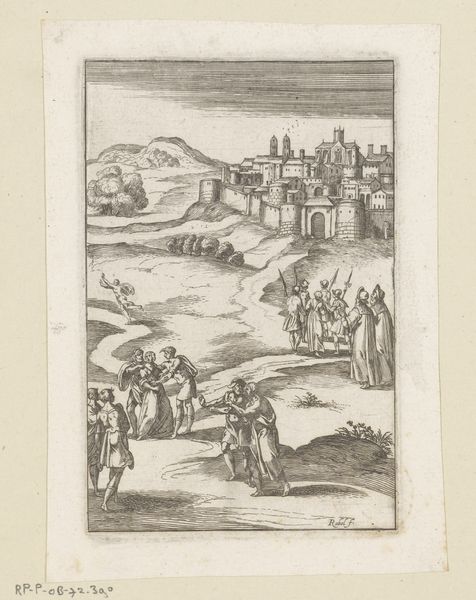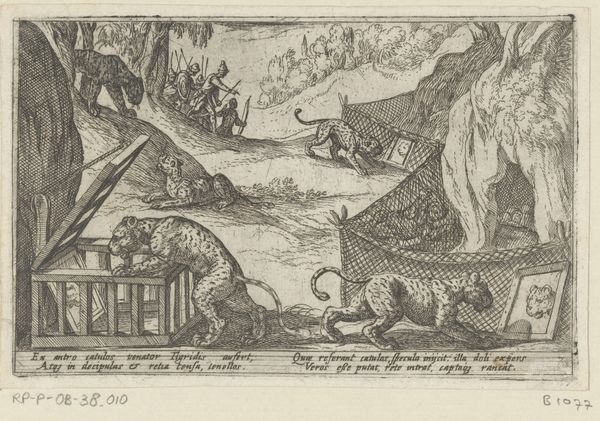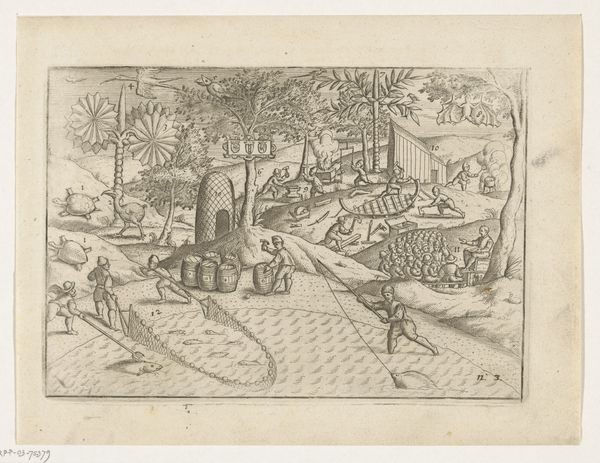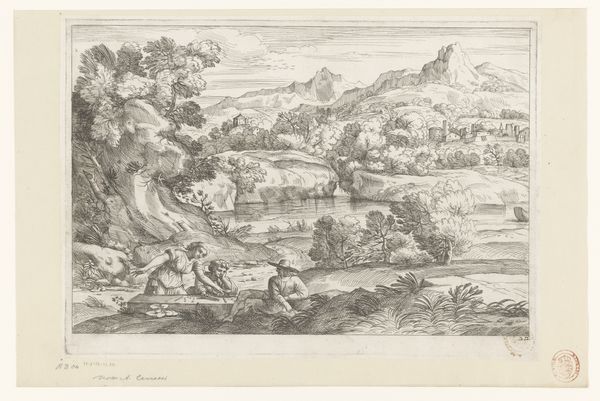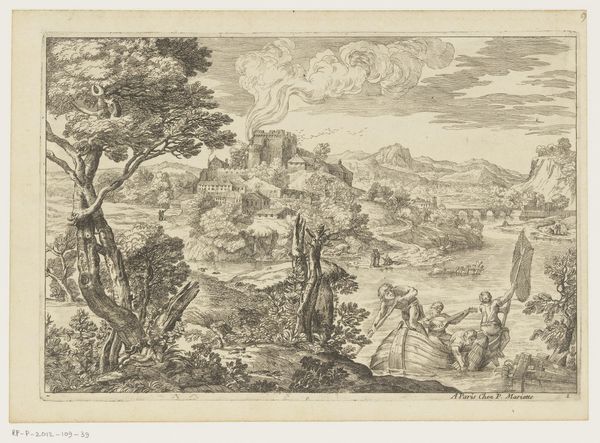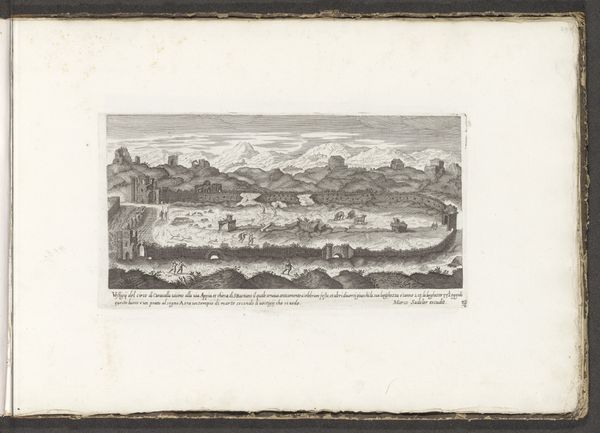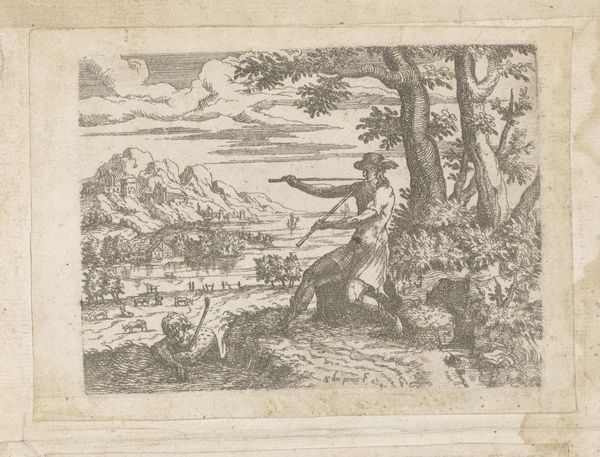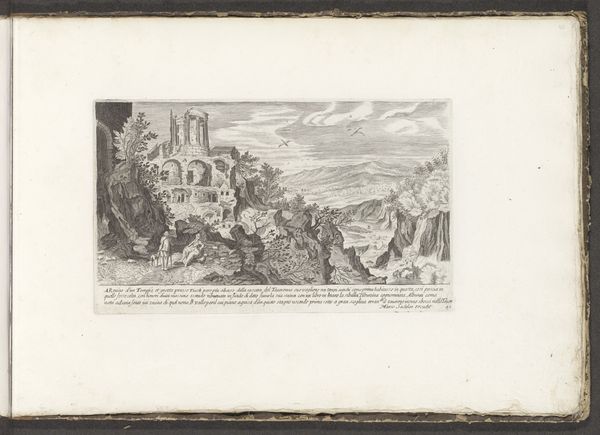
print, etching, engraving
#
narrative-art
#
baroque
#
dutch-golden-age
# print
#
etching
#
landscape
#
figuration
#
engraving
Dimensions: height 144 mm, width 96 mm
Copyright: Rijks Museum: Open Domain
Editor: So, this etching by Daniel Rabel, titled "Zeegezicht met ontvoering van Europa," from sometime between 1588 and 1637, depicts the abduction of Europa in two distinct panels. The bottom panel especially gives off a chaotic and emotional feel. What do you see in this piece beyond the immediate narrative? Curator: The division into two registers immediately directs us to reflect on the contrasting realms being presented, a pictorial strategy to understand political and social dynamics. We have the chaotic, uncontrolled emotions surrounding Europa's abduction in the lower half and then an almost serene, formalized landscape above. Does the contrast speak to larger structures of power? Consider who gets to dictate narratives, whose emotions are validated. Editor: That’s interesting. I hadn’t thought about the top half acting as a sort of commentary on the bottom half. So, is the “civilized” world in the top panel perhaps indifferent to the chaos of the abduction, which, from our modern perspective, feels inherently wrong? Curator: Exactly. And it’s not just indifference but also perhaps a framing. Consider that the landscape, within its ornamental border, might represent a curated, even propagandistic view – the “official” story being told, as opposed to the raw, emotional truth of the abduction below. Who benefits from controlling that narrative? And what power dynamics are at play when stories are reframed? Editor: So, by juxtaposing these scenes, Rabel subtly critiques the accepted narrative of the Europa myth, revealing uncomfortable truths about power and gender. It's making me consider who is not only controlling the dominant culture, but more importantly who is often being omitted? Curator: Precisely! Art often reveals these uncomfortable truths when we interrogate it from multiple perspectives and challenge supposed 'neutral' standpoints. Keep asking these critical questions, and you will continually find new layers of meaning in historical works. Editor: That’s definitely given me a lot to consider about the artwork's narrative and subtext. I never would have interpreted it like that, and appreciate it so much more now. Thank you.
Comments
No comments
Be the first to comment and join the conversation on the ultimate creative platform.
